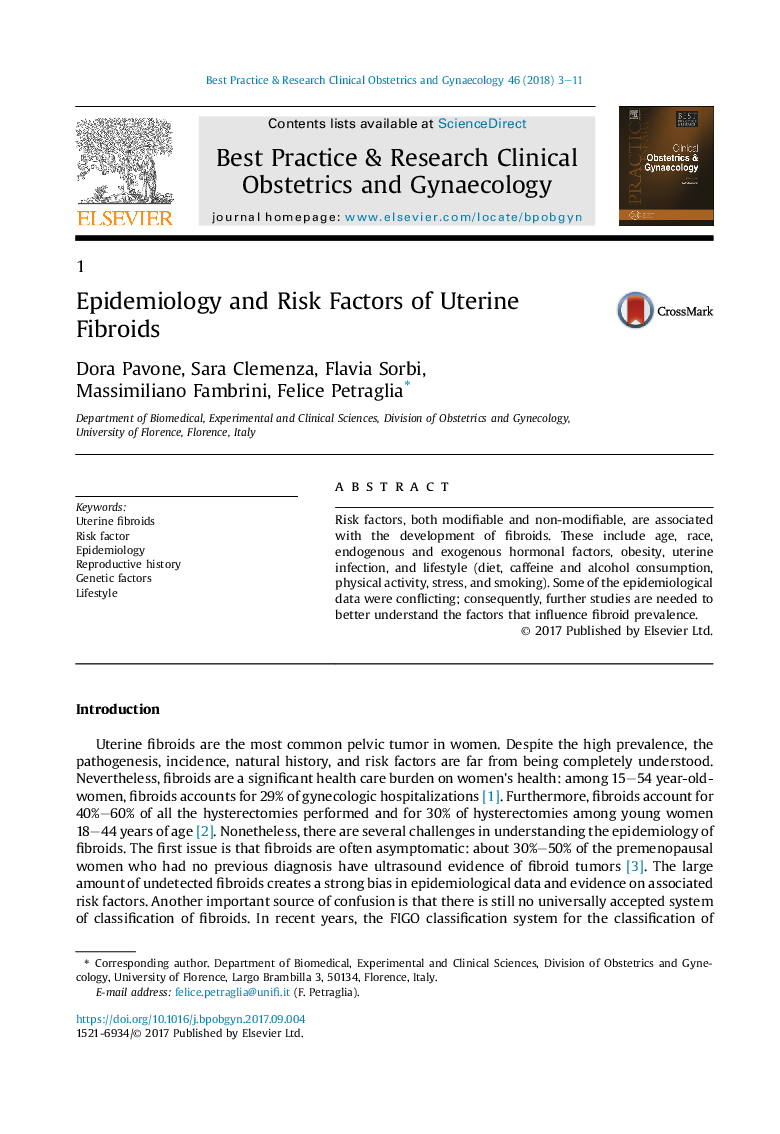| Article ID | Journal | Published Year | Pages | File Type |
|---|---|---|---|---|
| 8776562 | Best Practice & Research Clinical Obstetrics & Gynaecology | 2018 | 9 Pages |
Abstract
Risk factors, both modifiable and non-modifiable, are associated with the development of fibroids. These include age, race, endogenous and exogenous hormonal factors, obesity, uterine infection, and lifestyle (diet, caffeine and alcohol consumption, physical activity, stress, and smoking). Some of the epidemiological data were conflicting; consequently, further studies are needed to better understand the factors that influence fibroid prevalence.
Related Topics
Health Sciences
Medicine and Dentistry
Obstetrics, Gynecology and Women's Health
Authors
Dora Pavone, Sara Clemenza, Flavia Sorbi, Massimiliano Fambrini, Felice Petraglia,
